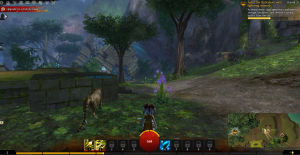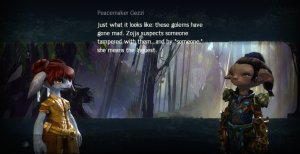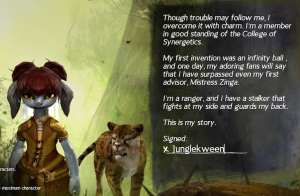“Like traditional landscapes, video game landscapes incorporate the moral ideologies of their producers and therefore limit or direct the kinds of lessons about the real world that players might learn. Video game landscapes my therefore reinforce the dominant ideologies that govern the production of real world landscapes as much as they challenge them”
When playing the game, in my world, there are two main landscapes: lush jungle/tropical rainforest, and harsh rock faces/caves.


My first thought was, for a “genius” society that was allegedly the most technologically advanced, the setting was extremely underdeveloped, with there being primitive stone structures nestled in between energy-channeling devices and personalized robots. I do have a jungle cat companion and adequate gear to help protect me from the harsh environment and dangerous creatures, but it is interesting to me how they chose to portray the backdrop as simultaneously conducive to advanced forms of life, but also barely touched.

The premise of my first couple of challenges was to fix the “golem” robots that some evil force had tinkered with, convince younger characters not to join the evil forces, and conduct several experiments for my “genius” race. I believe I am supposed to be one of the “good guys” protecting the land for invasion, and it’s unclear whether my kind is native to the area or not.
Interestingly, despite the fact that the game takes place during a time of war, the environment seems to be thriving, and nature seems to be doing its own thing, even in crisis. There are no signs of destruction, as even large explosions, sparks, battles, etc. do not seem to modify the environment whatsoever. To me, this seems ridiculous: the environment matters insofar as it is interacting with you, but you interacting with it produces no effect??? This is a similar discourse, when applied to real life, that led to our current and ongoing environmental crisis.
The dichotomy shown in this game of human-like creatures living in relatively symbiotic harmony with the environment, while simultaneously acting extremely destructive and violent towards and within it, demonstrates a kind of utopia. To humans, our ideal would be to do whatever we want, whenever we want, wherever we want, and have the environment cater to our needs, while also not having to put in the work to create infrastructures in order to make our survival possible. In my opinion, it’s a “best of both worlds” scenario that obviously isn’t realistic, but is quite fun.
